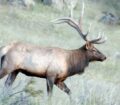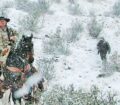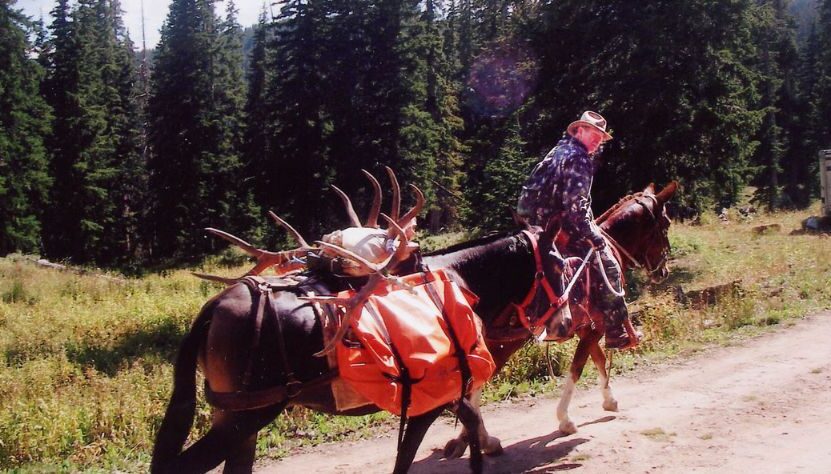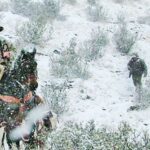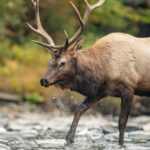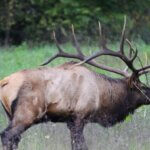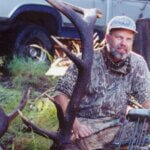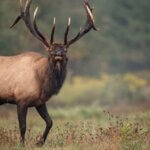Editor’s Note: Wayne Carlton of Colorado has hunted and guided elk for about 40 years. He is the father of the diaphragm elk call and the creator of Camo West’s Vanish camouflage. We’ve asked Carlton for his 10 best secrets for hunting elk.
- Locate the area in each state that produces the most big bull elk to find big elk to hunt. Check the Boone and Crockett (B&C) and Pope & Young (P&Y) records to learn the states and the counties in those states that historically have produced the most enormous elk. Also, learn which counties have most recently produced record bull elk. Due to habitat changes, the more current your information about bull elk, the better your odds are for finding them. Arizona, New Mexico, Idaho, and trophy units in Colorado have all produced big elk.
- Scout the area you’ve chosen to hunt. If you don’t have a good guide who knows where the elk wallows are and where the elk like to feed and bed, you’ll spend an enormous amount of time trying to find elk to hunt. In most arid states like New Mexico and Arizona, the quickest way to scout for elk is first to locate the water holes, tanks, and ponds, which are stationary and generally relatively small. The elk must concentrate at those watering places, unlike the elk along streams running the entire lengths of canyons. Historically, large numbers of big elk have come from arid states.
- Hunt elk in their beds. During the early morning, elk will move from their feeding spots to their bedding areas with their cows. In the late afternoon, they’ll move out of their bedding regions toward grazing places. Usually, you won’t be able to call a big bull elk to you. The only way you can use calls effectively to bring a big bull to you is to get extremely close to him. You’ve got to hunt him where he’ll spend most of his daylight hours, and that’s in his bedding area.
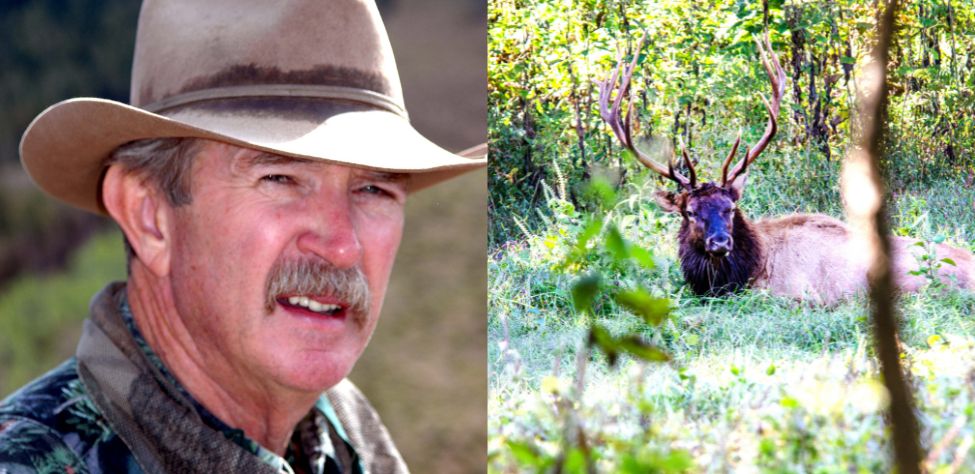
- Know what calls to use when you get close to big bulls. One of my favorite calls is the challenge bugle of a young bull. The lost cow call or aggressive cow call are two other calls you need in your calling repertoire. Don’t just learn to give one call; you can use many different calls to talk to that bull elk. Learn the different types of bugles. You don’t just want to use a fluty kind of bugle. Also, learn to do a screaming bugle call, which will aggravate the bull you’re trying to take and make him come into you. You want to challenge that bull and let him know you’ve come into his bedding area to date his girlfriends.
- Be patient, especially in the early part of the season. This past season, I guided a hunter to a bull that scored 320 inches B&C on public land in Colorado. We took the bull at our first spot on the first day of the season, but not until 11:45 am. We sat in the area I’d chosen to call from for 45 minutes and never heard an elk, even after I’d gone through a series of calls. Finally, we heard one cow call back. I went through a series of bulges using some of my diaphragm calls. Then I gave a long, dramatic cow call, dragging it out. After sitting in that one spot and calling for 50 minutes, I finally heard the bull give one grunt. That grunt told me the bull was in the area but that he wouldn’t come to where I was calling. We closed the distance to him from about 200 yards, and within 10 minutes, the bull came walking to us with half a spruce tree hanging in his antlers. My bowhunter took this 6×7 bull elk when the elk was 17 yards away from him. We hunted in the bedding area and were patient enough to wait until the bull told us where he was. We got close to him, and he finally came to us.
Looking for more content? Check out our YouTube channel and watch ““600 Miles on One Tank of Gas” with Tom Blais” by John E. Phillips.
Expert Guidebooks on Elk Hunting: Best Sellers
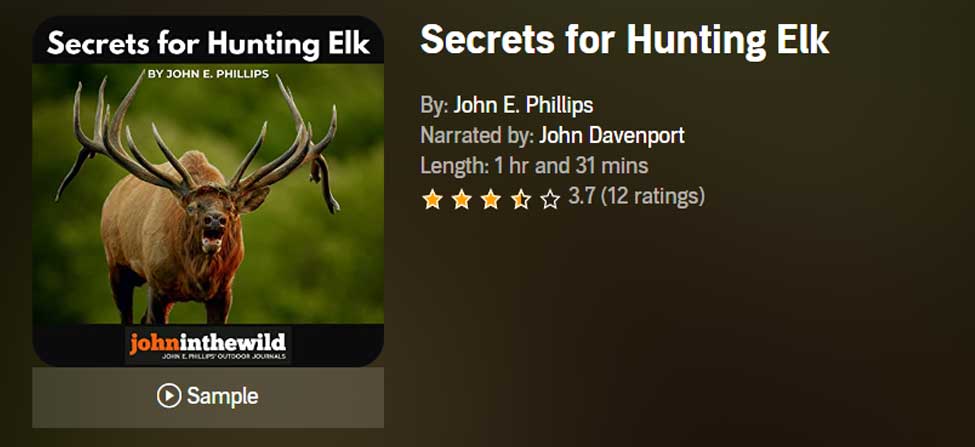
Secrets for Hunting Elk
The quickest, easiest (if there is an easy way), and safest way to find and take that bull elk of a lifetime will be to hunt with a guide.
Chad Schearer, a longtime Montana guide and TV personality, told me, “My hunter is my gun. If I get to the elk, and my hunter isn’t with me, then we don’t take the elk. My job is not only to find the elk but also to help the hunter get to the elk and make the experience as enjoyable as I can for him.” That’s the kind of fella with whom I want to go elk hunting.
An elk hunt can be tough, but it doesn’t have to be so tough that you don’t enjoy it. That’s why this elk hunting book starts with the confessions of an elk guide and with Chad Schearer’s philosophy of what the guide and the hunter’s relationship should be.
A good portion of your success will depend on your physical condition, and Matt Morrett of Harrisburg, Pennsylvania explains how an eastern hunter can get ready physically during June and July to hunt western elk, the animals he describes as, “Like deer or turkeys on steroids.”
Wayne Carlton, well-known elk hunter and TV and video personality from Montrose, Colorado, tells us what types of elk calls to use and what to say to the elk. Mike Miller of Colorado, another elk guide and Mossy Oak video personality, has tactics for the best equipment for bowhunting and gun hunting elk.
You’ll learn helpful strategies and hunting tips in this book, as well as some straightforward hunting methods that will help to make your elk hunt more successful.
“Thanks to the advice in your elk hunting books, I was able to call up a nice 6-point (6X6) bull elk! He was bugling like crazy. I called him in from about a ¼ mile away. Called him into bow range (about 40 yards away). It was a thrill!” ~Rob Brannon
VERSIONS: AUDIBLE & KINDLE
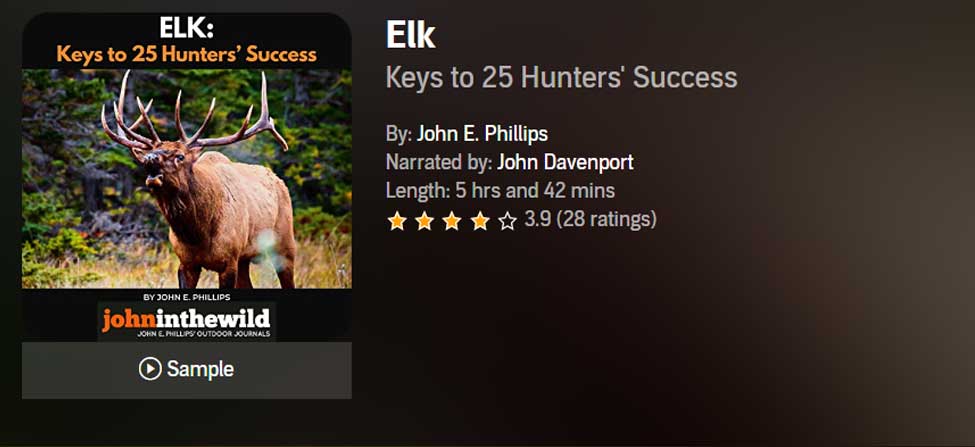
Elk: Keys to 25 Hunters’ Success
Often just one tip or tactic makes the difference in whether you take an elk home to dinner or have to hike back to the truck by yourself. In John E. Phillips’ latest elk book, Elk: Keys to 25 Hunters’ Success, you’ll learn from successful elk hunters the strategies they use to find and take elk.
Many know that the technique that seems to work most often is to hunt where other elk hunters don’t and understand where the elk are before you go on a hunt by studying data from each state, visiting HuntData (see chapter 1), examining maps, and reading postings on elk forums.
This book also tells you how to get ready physically for an elk hunt, including participating in Train to Hunt Competitions, what gear you need to take, how to enjoy a successful do-it-yourself elk hunt, or how to pick the best elk guide for you. You’ll also hear about the X System and the Broken Y System of hunting elk.
Although no one person has all the answers on how to help you find and take your elk, I’m convinced that this book’s outdoors men and women will teach you how to have satisfying elk hunts.
As my friend Karl Badger once told me, “Elk hunting doesn’t get any better than when I ride horses into the high backcountry, see two grizzly bears, hear a pack of wolves howl close to camp all night long, eat plenty of delicious food prepared on a fire and enjoy the company of good friends.”
VERSIONS: AUDIBLE, KINDLE & PRINT
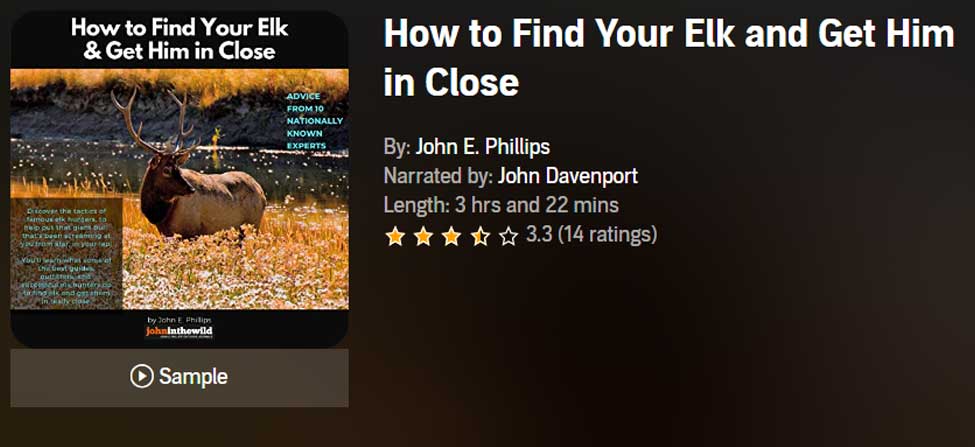
How to Find Your Elk and Get Him in Close will teach you the tactics of 10 nationally known elk hunters, to help put that giant bull that’s been screaming at you from afar, in your lap. You’ll learn what some of the best guides, outfitters, and successful elk hunters do to find elk and get them in really close.
Also in this audiobook, you’ll notice that the majority of the experts call elk to within bow range. We selected numerous bowhunters and bowhunting guides, since the bowhunter has to get much closer to a bull than the gun hunter does – often less than 20 or 30 yards – practically in your lap.
On one elk hunt, I’d heard this bull bugle all morning. My guide had called him within 30 yards, and he was standing just inside black timber. I saw the smoke from his nose wafting out into the icy air less than 30-yards away. All the bull had to do was step out, and I could take the shot with my bow. But then, through no fault of my guide or me, the bull vanished.
The only conclusion I could come up with to understand why the bull I wanted to take with my bow hadn’t stepped out and given me a shot, was because he got raptured. He evidently had left the earth with no trace of himself.
This hunt was when I started wanting to learn more about hunting elk up close. In this book, I’ve tried to find some of the most knowledgeable, experienced, and practical elk hunters. I’ve always found that the best way to learn any outdoor skill, is to either hunt or fish with the best sportsmen in that field.
Often, in elk hunting, that means elk guides, who generally hunt every day of the season and receive a salary for every hunter they guide. So, I’ve put together a group of some of the best elk hunters I know to help us all learn how to find bull elk and get them in close.
VERSIONS: AUDIBLE, KINDLE & PRINT
Tomorrow: How to Take Big Bull Elk – 5 More Ways

